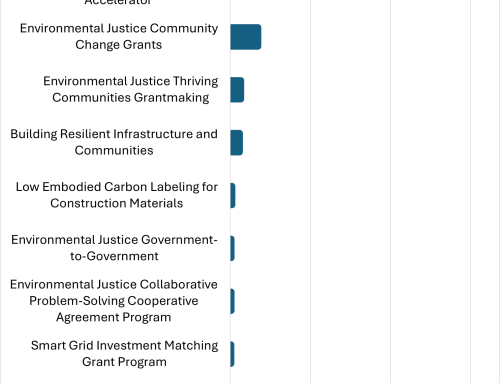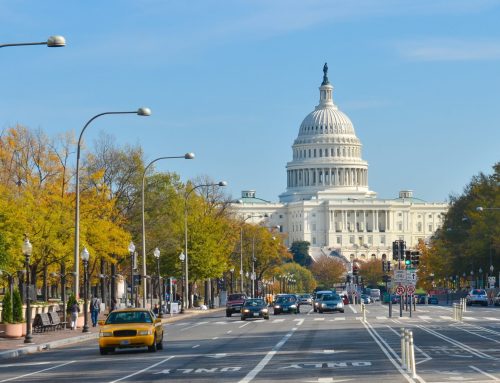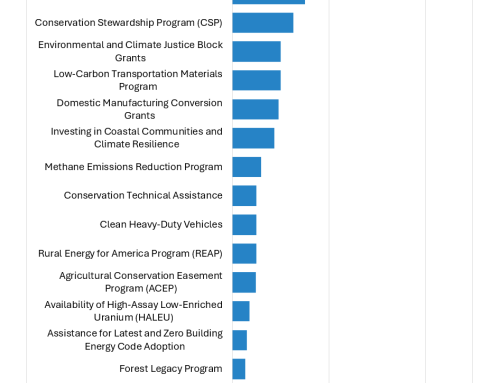
Background
The Rural Energy for America Program (REAP) is a two-billion-dollar funded in part by the Inflation Reduction Act (IRA). REAP provides financing for agricultural producers and rural small businesses to install renewable energy systems or make energy efficiency upgrades. First authorized in 2008 via the Farm Bill, REAP has been renewed in all Farm Bills since then up through the passage of the Inflation Reduction Act (IRA), through which it received additional funding. In the 2014 Farm Bill renewal, the program was given a permanent annual $50 million funding baseline, which has been maintained since along with additional discretionary funding.
Agricultural producers or rural small businesses can apply for grants or loans for either renewable energy systems or energy efficiency projects. Eligible renewable energy systems include wind, solar, geothermal, and biomass systems, and eligible energy efficiency upgrades include insulation, heating, ventilation, and air conditioning (HVAC) upgrades, and equipment upgrades, among others. These awards often cover the up-front expenses for upgrades that save significant energy costs over time for these businesses as well as reduce greenhouse gas emissions.
The Inflation Reduction Act, passed in August 2022, appropriated over $2 billion for REAP through Fiscal Year 2031. The U.S. Department of Agriculture (USDA) designed the program to award $1 billion for Fiscal Years 2023 and 2024 alone. This greatly increased the scale of the existing program by doubling the maximum grant amount from $250,000 to $500,000 for efficiency projects and $500,000 to $1 million for renewable energy projects. Loan guarantees are capped by percentage of project cost, with 80 percent of costs as the maximum guarantee in Fiscal Year 2024. The nature of loan programs means that appropriated funding can support many projects, “For example, appropriations of $500,000 in FY 2016 generated $7.6 million in loan guarantees.”
As of June 11, 2024, announced REAP awards using IRA funds include 28 loans and 3,701 grants, for a total of $810.9 million in announced awards. The average loan amount is approximately $11 million, while the average grant amount is approximately $135,000.
Where Awards Are Going
In the history of the program, nearly $4 billion has been invested in communities around the country per USDA data. From 2012 through 2024, remarkably nearly a third of program funds have gone to North Carolina – far more than any other state. Of all funding to date, 75 percent has been invested through loans and the remainder through grants.
The passage of the IRA increased the scale of the program significantly. On an annual basis, this is four times the previous annual appropriation for the program. Of the post-IRA awards, California has been awarded more funding than any other state followed by Illinois, New York, Idaho, and North Carolina. Minnesota had the largest number of individual projects, followed by Illinois, Iowa, Pennsylvania, and Ohio. The total funding comparisons can be misleading, however, because of the difference in scope between projects that receive grants and those that receive loans. California has the highest amount of funding awarded at $92 million, but $77 million of that is in loans to be paid back (unless they are forgiven through the program).
Of the REAP awards since IRA was passed, about 84 percent have been for renewable energy projects and 16 percent have been for energy efficiency projects (not including five not categorized). All states have more renewable energy projects than energy efficiency projects. The exception is South Dakota, which has received a total of 36 awards, 72 percent for efficiency and 28 percent for renewable energy.
Figure 1: IRA Funding awarded by state from REAP as of May 2024
By far the largest use for the grants has been the installation of solar energy, with nearly three quarters (2,771 of the total 3,729 projects) including solar energy in their descriptions. Other common uses include grain dryers (302 awards), upgrades to LED lighting (97 awards), and the installation of digestors for waste-to-energy production (37 awards).
REAP has awarded 28 loans since the passage of the IRA. Of those, six are $25-million-dollar awards, with the others ranging between $1.8 million and $23.8 million. The six largest awards are for projects that amount to small power plants: utility-scale solar installation, the conversion of landfill gas to electricity, and biomass-to-energy converters.
So far, 76 recipients have been awarded $1 million, the maximum grant award size. Of those, 17 are some form of digestor, taking agricultural waste and converting it to energy, and 48 are solar arrays powering farm or small business activities. The financial impact of these grants on small businesses is important to note; for example, Hawaiian Turfgrass Inc. received a million-dollar grant to install a solar system, replacing their current diesel generator. The company anticipates savings of $636,560 annually, meaning more than the value of the grant will be returned to the local economy by the second year after installation.
Funding to Come
REAP also has a secondary arm that has not made awards yet in the form of technical assistance grants. Applications for these grants have closed but no awards have been announced yet. These awards will go to entities assisting REAP applicants with technical implementation of renewable and energy efficiency measures, or with environmental and regulatory compliance. This funding for third parties more experienced with government grant applications may increase the number of disadvantaged communities that apply for funding and ensure the program is more accessible.
These awards create a significant net positive for both rural communities and the Biden Administration’s emissions reduction goals. Agricultural emissions, particularly methane, are a large portion of greenhouse gas emissions in the United States but are often especially tricky to track down and abate. Sources are spread out across the country, and generally not “point source” (no obvious smokestack or tailpipe). Some projects target methane specifically while others contribute to carbon dioxide emissions reduction. These REAP awards unlock both a financial incentive for rural businesses and farms and contribute to the curtailment of some of these emissions.
REAP will continue releasing awards through FY2031. The next application window starts June 30, 2024.


